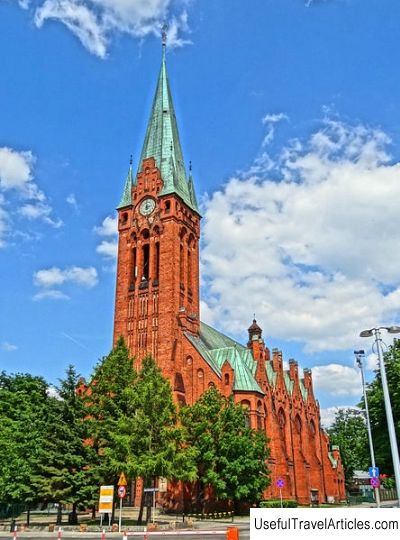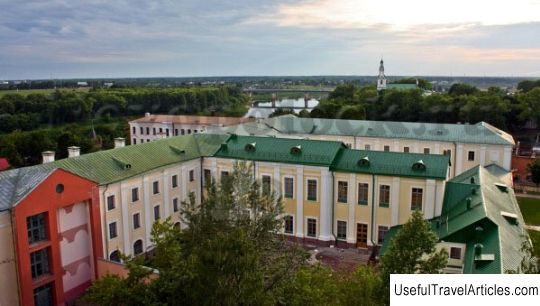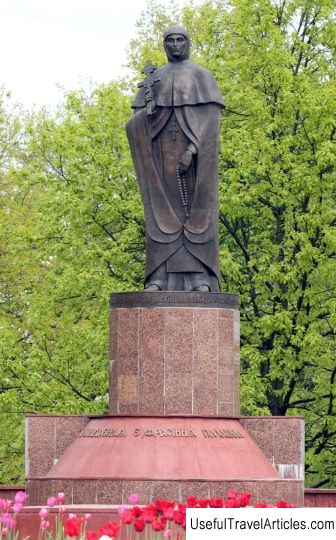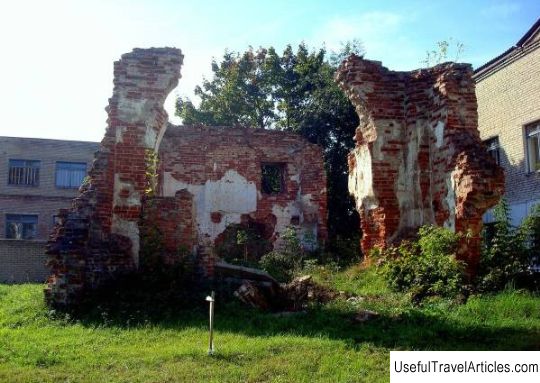Catholic Church of St. Andrew Boboli description and photos - Belarus: Polotsk
Rating: 8,1/10 (482 votes) 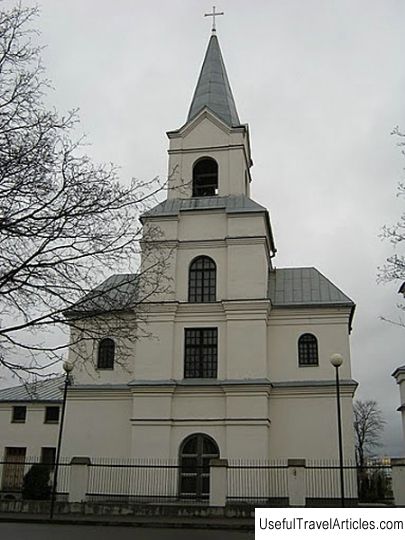
Catholic Church of St. Andrew Boboli description and photos - Belarus: Polotsk. Detailed information about the attraction. Description, photos and a map showing the nearest significant objects. Photo and descriptionThe Church of St. Andrew Boboli was built in 1997 in the city of Polotsk. Andrei Bobola - Jesuit missionary and preacher (1591-1657), was martyred for his faith and canonized by the Roman Catholic Church. It is considered the heavenly patron of Belarus and Poland. Andrei Bobola devoted his whole life to serving God. He walked through the towns and villages of Polesie, with his oratory and his own example of truly Christian charity, he achieved a massive conversion to Catholicism in entire settlements. A brilliant student of the Jesuits, Andrei Bobola won thanks to his eloquence and excellent knowledge of Holy Scripture in theological disputes of Orthodox priests. Andrey Bobola became famous for his faith, courage and unparalleled mercy. During the plague epidemic that broke out in Bobruisk after the war with Moscow, he personally looked after the sick and buried the dead. His sermons in the churches of Bobruisk inspired hope and reassured the desperate and frightened people in the plague city. For Orthodox Christians, Andrei Bobolya became a sworn enemy. The Cossacks of Bohdan Khmelnitsky, who considered themselves the defenders of Orthodoxy, declared a hunt for him. On May 16, 1657, the Cossacks seized the missionary and executed him with a terrible execution. He was flayed alive, his tongue pulled out, and then beheaded. The relics of St. Andrew (in the Polish pronunciation of Andrzej) remained incorrupt, despite the fact that during the turbulent years of revolutions and wars, they traveled thousands of kilometers and were kept in the most strange places. So, after the revolution, The relics were confiscated from believers and exhibited in Moscow as a mummy, then the shrine was bought by the Catholics and transported to Rome, where, after canonization, the relics were sent to Warsaw. In Warsaw, incorruptible relics supported the believers during the brutal war. Repeatedly their place of stay changed. Secretly, they were transported across rivers and carried underground secret corridors. After the independence of the Belarusian people in 1996, the construction of the church of St. Andrew Boboli began in the ancient city of Polotsk. His relics were transferred here. The temple is dedicated not only to Saint Andrew, but also to all the believers of the Belarusian and Polish people who died for their faith, which is reflected in the magnificent frescoes and bas-reliefs of the church. The Church of St. Andrew Boboli became famous far beyond the borders of Belarus, attracting many pilgrims,       We also recommend reading House-Museum of N. G. Chernyshevsky description and photo - Russia - Volga region: Saratov Topic: Catholic Church of St. Andrew Boboli description and photos - Belarus: Polotsk. |
